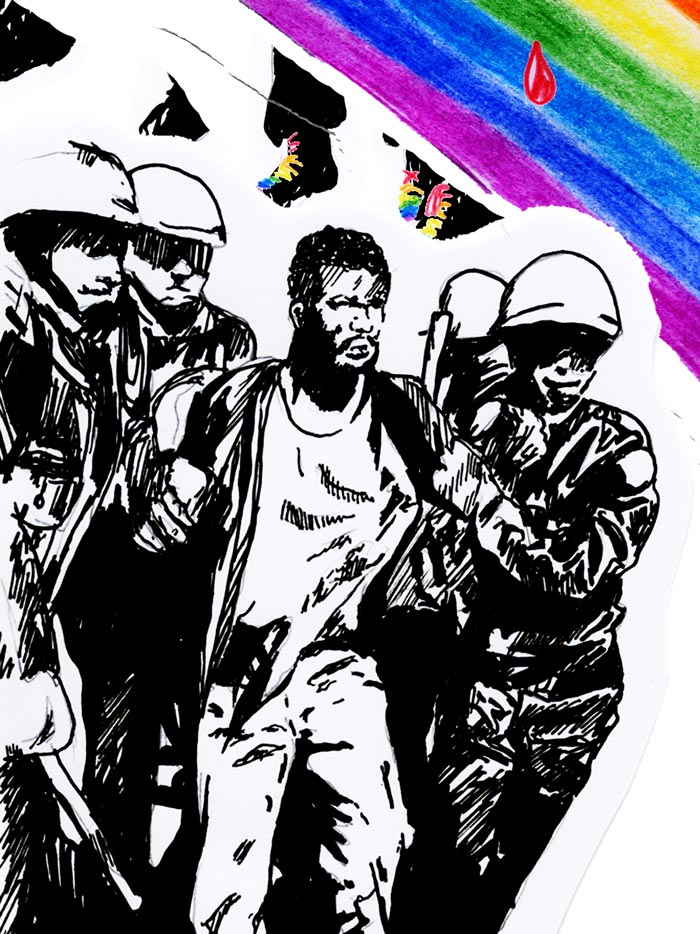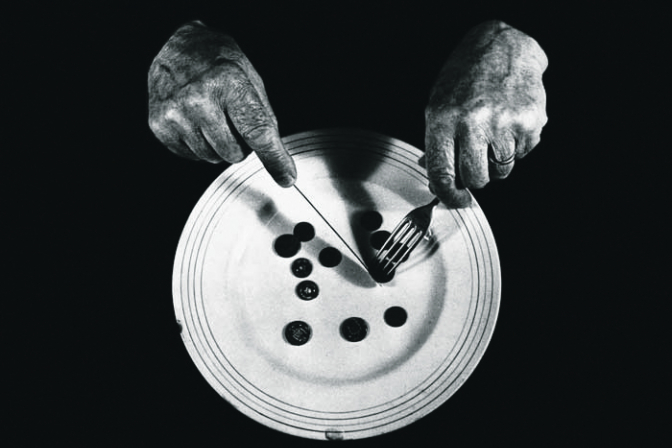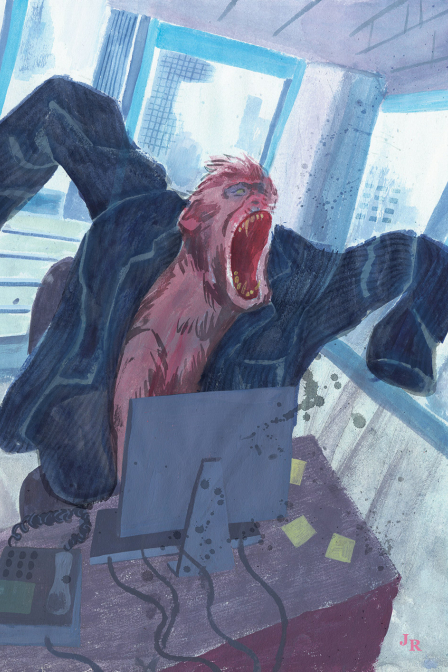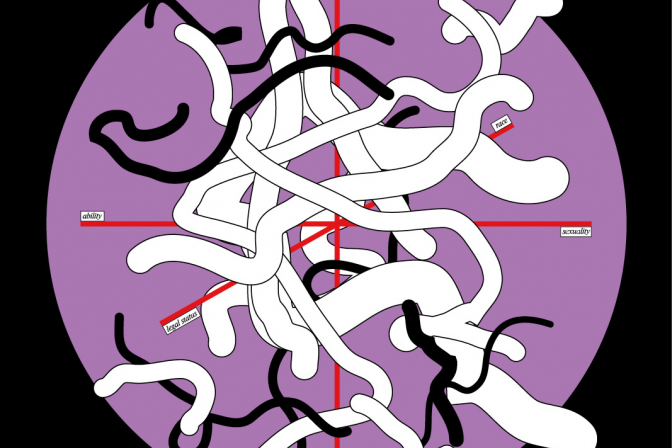Over the Rainbow: Queer Assimilation, Queer Citizenship, State Violence
I used to live in a house with someone who thought that it was really obvious that capitalism works for almost everyone. One day she came home and she was super excited and she said look at this image on the Downing Street website, it’s an image of two men in suits (both white) holding a rose between their hands. She says isn’t this just amazing, isn’t this progress.
“I run an institution,” David Cameron said at the time, “the Conservative Party—which for many many years got itself on the wrong side of this [gay marriage] argument, it locked people out who were naturally Conservative from supporting it […]”
What is and was always clear is that the current government’s reason for supporting gay marriage is to incorporate gay men and women (but not trans* people, for example) into the Conservative Party and its paradigms; of free enterprise, private ownership, and socially conservative ideas. Much of the rhetoric around the gay marriage debate framed itself in exactly these terms, that gay citizens should have the same rights and opportunities as everybody else, without any hint towards explaining which gay people are included here or whose bodies exactly comprise ‘everybody else’.
Many queer people will empathise with the frustration of the question posed to the UK earlier this year: ‘do you support gay marriage?’ The question is designed to a) only allow one answer from queer folk and allies and b) entirely hide a deeper question: do you support marriage—the acknowledgement by the state of the legitimacy of a sexual relationship—at all? And thus, the ‘gay marriage question’, as with any question of queer inclusions, produces a discursive bind, intended to foreclose critique of the institution into which queers (apparently) seek entry.
In positioning queers as if we are inside of and supported by the state, the outside is collapsed and with it the possibility for real critique of the state and its various manifestations (marriage, the police, capitalist economies etc.). This reproduction of state power by queers newly included in its official mechanisms also necessarily reproduces state violence. Entering a union specifically sanctioned by the state helps to cement the institution of marriage; so that as an institution it is stronger, less penetrable, with higher walls to scale. Thus, those who are still not appropriate sexual citizens may be further discriminated against, further excluded and further abused. That marriage, for example, where one partner is a non-citizen, is so heavily scrutinised, expensive, difficult (the UKBA arrive to break up your marriage of ‘convenience’) is because marriage gains power and legitimisation the more proper subjects it includes. It is precisely this inclusion of some gay relationships, then, that excludes in this case, non-monogamous relationships, trans* and non binary subjects, queer people of colour and migrant queer people in a way that is bolstered by normative queer assimilation.
The production of an acceptable sexual subject—a proper queer citizen—like the production of any subject, necessarily produces an abject unacceptable other. More than neutralising dissent, the production of proper queer citizens by the state also produces the social and corporeal deaths of (other) others.
Downing Street’s neatly dressed workers may now be afforded more freedoms despite their sexual preference (and because of their subscription to proper sexual and romantic codes), but these supposed freedoms in the workplace, for example, also strengthen the institution of capitalist labour production and more specifically of institutions that are explicitly involved in the production of state violence.
In an article titled Queer Necropolitics and the Expanding Carceral State: Interrogating Sexual Investments in Punishment (2013), Sarah Lamble describes how in January 2011, UK L(esbian)G(ay)B(i) and possibly and divisively soon to be T(rans*) charity Stonewall—an organisation named after the New York anti-police riots by members of the gay community in 1969—listed the UK home office, responsible for immigration, policing and security as its number one employer in a roll of ‘LGBT-friendly’ places to work. Home secretary Theresa May basked in the slick rainbow sheen of a ‘diverse’ and ‘tolerant’ workplace, forming a protective queer mask over the actual work—of deportation, racism, police violence etc.—performed by this place.
Since 2010 the site of the home office has become the space in which acceptable sexual citizenship and queer personhood is most visibly and violently produced. LGBT asylum seekers in the UK are increasingly forced to prove they are queer, as opposed to, necessarily, that they face danger in their countries of origin. This proof inevitably takes the form of often graphic sexual ‘evidence’—that victims of extreme domestic and sexual violence, for example, may be forced to present photographic or video evidence of their sex life and be cruelly interrogated on their intimate sexual practices. This is the price of queer citizenship, the sharpened edges of acceptable identities.
Analysing dozens of cases, the report exposed officials’ frequently crass approach. Sample questions included: “Was it loving sex or rough?”; “So you had intercourse with him not just blow jobs”; and “What have you found is the most successful way of pulling men?”
“Did you put your penis into x’s backside?” and “When x was penetrating you, did you have an erection? Did x ejaculate inside you? Why did you use a condom?” Even as ‘human rights injustices’ are expanded to include abuse of LGBT non-citizens, so as to instrumentalise the suffering of others in conflicts abroad, real live bodies escaping geographical sites where homosexuality is illegal are met with derision, abuse and disbelief by the state, which cannot imagine a queer subject who is also an outsider, who is abused, incomplete, other.
This same state, however, is still positioned by many queer and LGBT people and organisations as a body that has the power to protect the individual from another—as opposed to one who allows and perpetuates violence. Lamb highlights this shift in LGBT and queer organisations from one that naturally positioned itself against the police and the prison industrial system, to one which increasingly relies on these carceral mechanisms for protection of individual subjects and the legitimacy of queer struggles. On July 18th 2014 ‘Pink News’ (‘Europe’s largest gay news service’) reported that the Manchester police had just unveiled a new Pride-themed patrol car. This car has the predictable rainbow decal on the side and bears the statement “Police with Pride” as well as ‘LET’S END HATE CRIME’ in giant rainbow letters, and ‘REPORT IT’ in black text below.
In 2011 anti-gay posters started appearing around Tower Hamlets. The posters featured the text ‘GAY FREE ZONE” and decontextualized quotations from the Qur’an, feeding neatly into the same Islamaphobic and racist stereotypes connecting Islam to homophobia and misogyny that have repeatedly been activated as justifications for war in Iran and Iraq. Local Muslim groups, including the British Association of Muslims and the East London Mosque, and the gay Muslim group Imaan, publicly condemned the posters and when a teenage Asian Muslim boy was found to be responsible he was charged and sentenced to a fine of £100. However, local LGBT groups, particularly Rainbow Hamlets, issued a press statement calling for greater punishment, in particular demanding jail time – state violence as proof that the state take seriously the threat of violence (in the form of posters, here) against queer individuals.
On September 7th 2013 I had my first outing working as a Legal Observer for Legal Defence and Monitoring Group (LDMG). The EDL (English Defence League), a far right, racist and particularly Islamaphobic anti-immigration organization, marched through Tower Hamlets. A group of anti-fascists and members of the largely Muslim local community gathered to try to block the streets to prevent them from marching. 282 anti-fascists were arrested after having been contained for six hours under section 12 of the Public Order Act. Their police bail conditions stated that they did not have permission to participate in anti-fascist action for three months. All charges were dropped. 5 legal observers were arrested, and I only just managed to get out of the containment. While in the kettle three young Muslim boys asked if they could have some space to pray. The policewoman said no.
It should be noted that the EDL has its own active LGBT division, which has almost 4000 ‘likes’ on Facebook. Their description reads: “This Division of EDL is for us queers and those straight people who think we have the right to live”. Following this, the page continues “We call for the banning of the Burkha [sic] and the instant cessation of mosque-construction, based on the fact that the government has no idea who is living here”—a chillingly succinct image of who is included in having the right to live (here). The LGBT division of the EDL, a far right street organisation prone to making Nazi salutes at demonstrations, also mentions the 2011 posters, stating “Gay Free Zone posters were copied from the Nazis, who put Juden Heraus (jews get out) posters up in Germany.”
On September 12, 2014 Leicester Police’s Firearms and Dogs unit tweeted an image @Stonewall with the caption: “We believe it’s our differences that unite us. The more diverse, the more effective we are”. The image shows seven white men in a triangular offense pattern. Each is wearing full riot gear, a gas mask (which totally hides their features) and each carries a semi-automatic weapon. Each man wears rainbow shoelaces.
This is the image of men who will shoot and teargas and stamp on you; this is the image of the men who will hold you down; smash your head in; watch you bleed; kick you; this is an image of the men who are invisible behind their dystopian sadist masculinity; these are the men promoting diversity and their human side and their dripping fucking rainbow laces falling across your broken face.
This is the image of effective diversity.
This is the image of progress.
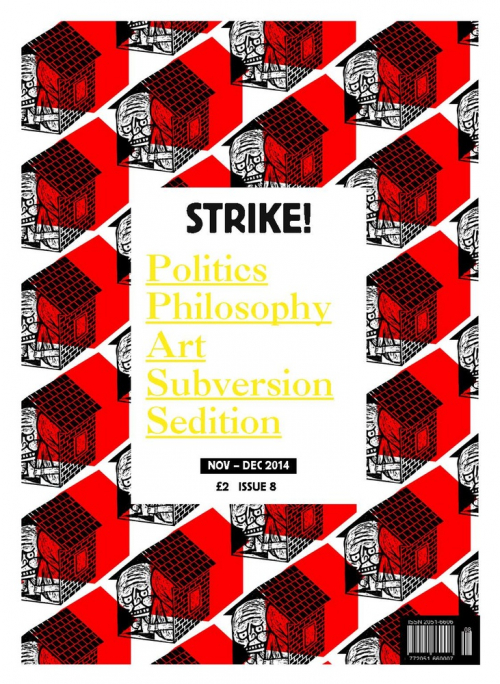
Get it here
